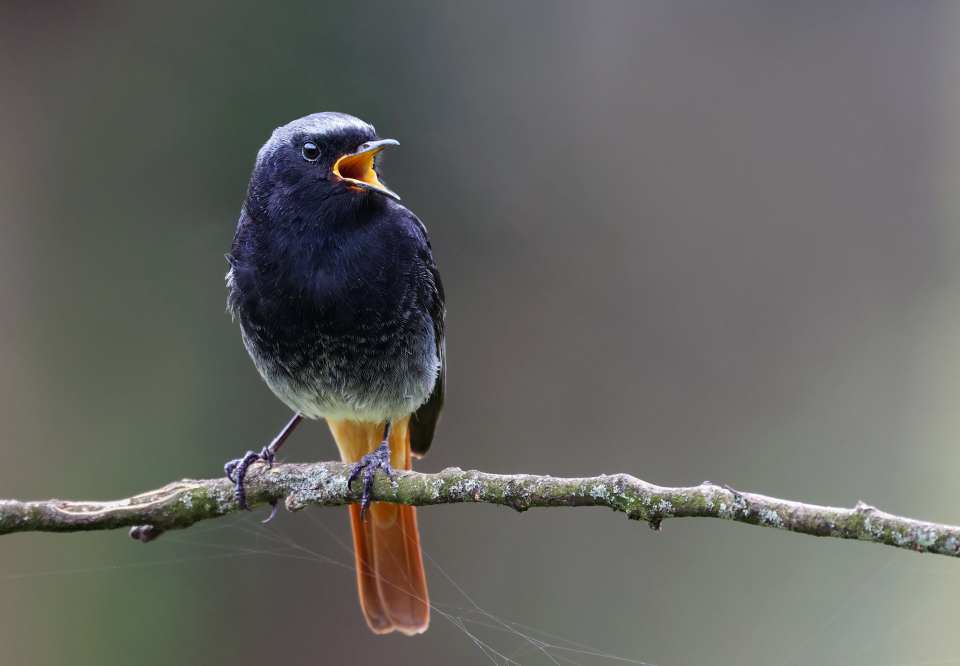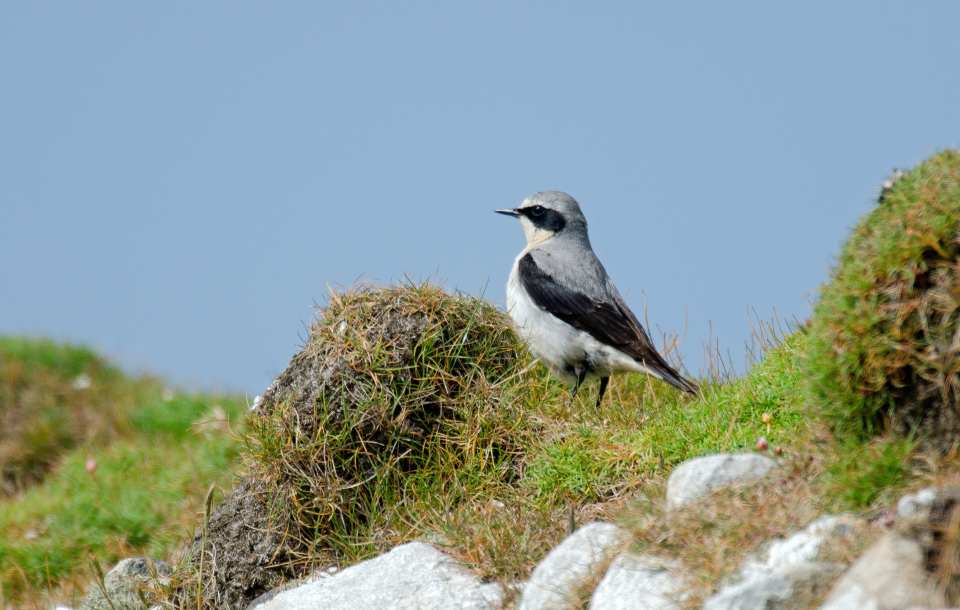Family: Muscicapidae
In the soft light of a summer morning, a flash of red catches the eye. A small bird flicks its tail, glowing like an ember against the green of the woods. It’s a redstart, one of Britain’s most captivating migratory songbirds. But telling which redstart you’re seeing, Common or Black, can be trickier than it first seems.
A Tale of Two Redstarts
In their breeding plumage, the two males of the species are easily distinguishable. The male Common Redstart stands out: a black throat, white forehead, grey back, and a rich reddish-brown breast.

An impossible-to-miss combination. The male Black Redstart looks as if he’s stepped from the shadows. He has dark, smoky plumage, a fiery red tail, and often a distinctive white panel on his wings.

But in the company of females and young birds of both species, things become less clear. Their subdued tones and similar shapes are remarkably similar. The most reliable clue to confirm whether or not you are looking at a Redstart is the flame-red tail. A common feature in both species, visible in every age and plumage throughout the year.
To help you identify these birds in the field, let’s start with a more detailed look at the Common Redstart.
The Common Redstart: Woodland Wanderer
The Common Redstart is a familiar visitor to mature deciduous woodlands, scrub, and hedgerows, although it is not unknown for them to visit urban and suburban areas. They breed in large numbers across most of the Eurasian continent.
In spring, males arrive in dazzling plumage, perching at the tops of trees to deliver their song, a delicate sequence of hurried notes that begins with a sharp “shree”. By autumn, their colours fade, though the remnants of spring brilliance linger.
Females and young birds are more subtly beautiful: warm buff-brown above, paler beneath, with a pale eye-ring that makes the eyes seem large and gentle. They prefer the safety of trees and shrubs, often quivering their tails.
Ad Space
The Black Redstart: City Survivor
Where the Common Redstart favours forest glades, the Black Redstart has made its home among rocks, cliffs, and city skylines. Once a bird of mountain outcrops, it now thrives in urban landscapes, where concrete and brick mimic its natural haunts.
They can be found across Eurasia; however, they tend to favour warmer climates, so they become more scarce in more northerly parts of the continent, such as the United Kingdom, where it is estimated that fewer than 50 pairs breed each year. In winter, they migrate towards coastal cliffs and beaches. On migration, they can appear almost anywhere. Even on occasion, in a suburban garden.
Their song is unmistakable: Consisting of a mix of delicate warbles. They are also synonymous with a harsh, crackling sound, often likened to static electricity or the crunch of gravel underfoot.
Telling Them Apart
When location and call don’t provide enough clues, especially for females and young birds, there are a few more pointers to look out for:
Both the Common and Black Redstart have a pale eye-ring. However, the Common Redstart eye ring appears a little softer and less severe than that of the Black Redstart.

Juvenile Common Redstarts are spotted like young robins and always show the telltale red tail.

Juvenile Black Redstarts by contrast, are plain grey-brown without spots, darker overall, and lack the lighter throat and belly of their cousins.

Black Redstarts often perch on buildings or rocks, running between hops as they feed. Common Redstarts, meanwhile, prefer leafy perches and move with a gentler, bobbing rhythm.
Ad Space






References
- Golley, M. (2016) Field Guide to the Birds of Britain and Ireland. 2nd edn. London: Bloomsbury Publishing Plc. [Accessed 07/10/2025]







